The Port of Los Angeles is a department of the City of Los Angeles (Harbor Department) that hires City employees. The City of Los Angeles is a civil service, equal opportunity employer and most positions require applicants to take a competitive civil service exam through the City of Los Angeles Personnel Department. Successful applicants are eligible at any City of Los Angeles department where a job classification exists, based upon the score achieved on the examination. See below to learn more about civil service examinations, the City/Port application process and alternative pathways to civil service.
The City of Los Angeles uses a civil service system of employment and promotion. The system is based on the principles of merit, fairness, and equal employment opportunities.
The City lists civil service job opportunities on GovernmentJobs.com. After creating an account and submitting your online application, you may receive an email invite to participate in a civil service exam.
To subscribe for exam notifications for upcoming exams, or to see past bulletins of jobs not currently open, click here. After clicking on the desired job title, click the green button to subscribe.
The City of Los Angeles Harbor Department hires through the Targeted Local Hire Program and Bridge To Jobs Program, which seeks to target and recruit individuals from vulnerable and underserved populations.
While there are no minimum requirements, experience, or qualifications necessary to apply, candidates need to have the basic skills required to be trained in and perform a full-time job and posses the legal right to work in the U.S.
Through both of these programs, candidates perform on-the-job training, followed by a probationary period. Once the probationary period is successfully completed, candidates are transitioned to full-time regular civil service employment.
It is recommended you contact a referral agency and indicate you are interested in applying for the Targeted Local Hire or Bridge to Jobs Program. The referral agency will set up an appointment with you to start the process, or help you find appropriate services. Note that certain agencies may have qualifying or eligibility criteria before they are able to provide services.
***ENTRY-LEVEL POSITIONS***
Provides alternative job pathways into City of Los Angeles civil service via full-time, paid, on-the-job training for entry-level City positions.
The Targeted Local Hire Program provides individuals an opportunity to be randomly selected for referral to City departments in order to participate in their hiring process and be considered for entry-level jobs.
Targeted Local Hire Office Trainee/Vocational Worker Pathway (Jobs Assigned to the Harbor Department)
Administrative Clerk
Office Trainee →
Delivery Driver
Gardener Caretaker
Vocational Worker →
Tree Surgeon Assistant
Vocational Worker →
Vocational Worker →
Maintenance Laborer
Vocational Worker →
Mechanical Helper
Vocational Worker →
Street Services Worker
Vocational Worker →
Warehouse & Toolroom Worker
?
Provides alternative pathways into City of Los Angeles civil service via full-time, paid, on-the-job training for semi-skilled City positions.
The Bridge to Jobs program provides individuals the opportunity to be hired for semi-skilled City positions, which are full-time, paid, and provide on-the-job training.
The program provides individuals an opportunity to be randomly selected for referral to City departments in order to participate in their hiring process and be considered for semi-skilled jobs. in order to be eligible for the program, candidates must provide proof graduation from a U.S. high school, G.E.D. or equivalent from a U.S. institution; an approved certification, or passing score on the City’s aptitude test.
Bridge to Jobs Trainee Pathway (Jobs Assigned to the Harbor Department)
Traffic Painter and Sign Poster
The City of Los Angeles Harbor Department is a great place to work! In addition to experiencing the amazing views and coastal breezes found at the busiest port in North America, there are a variety of benefits to being a City employee assigned to the Harbor Department.
The City of Los Angeles is proud of its commitment to inclusion and diversity among our employees. Diversity in our workforce gives the City access to a rich range of talent, representing different experiences, perspectives, and styles. These differences foster a collaborative and innovative work environment that makes us a stronger and better organization on every level.
By maintaining a work environment built on respect, trust, collaboration, and cooperation, we are better able to provide superior service to the City’s diverse communities. In order to grow, evolve, and improve, we must continue to cultivate a culture that appreciates, welcomes, and embraces a diverse workforce.

 310.984.6972
310.984.6972




 Service Areas
Service Areas























